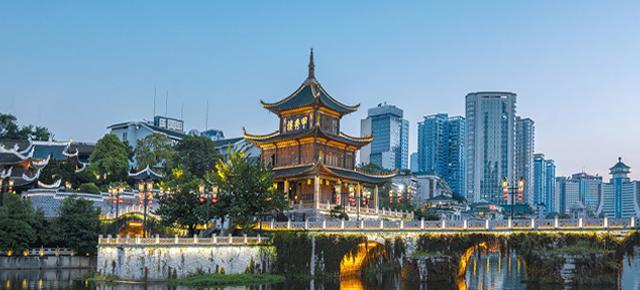Guiyang's burgeoning forest coverage reaches 55 percent
english.guiyang.gov.cn|Updated: August 3, 2021
Guiyang city is growing ever greener – with the capital of Southwest China's Guizhou province having consistently extended its forest resources in terms of quantity and quality and to boot making considerable gains in protecting its biodiversity.
Statistics showed that the total area of forests in the city has burgeoned to 6.48 million mu (430,666 hectares), increasing the forest coverage rate to 55 percent. Guiyang is also home to 2,606 species of vascular plants, 2,264 species of spermatophytes, 5,294 rare trees and 439 species of vertebrates – accounting for 41.7 percent of the total amount of Guizhou province.
To improve the forest ecology, Guiyang took considered efforts to strengthen its green barriers. Two forest belts were built surrounding the metropolis. These were then extended for 374 kilometers with an area of 2.18 million mu covering the central city, Huaxi, Baiyun and Guanshanhu districts, Qingzhen city and Xiuwen county.
In recent years, the capital city has carried out a series of activities, such as returning farmland to forestry to prevent and reverse the expansion of stony deserts. It has reafforested barren hills, adjusted plant structures and totally completed forestation areas of 1.73 million mu.
In addition to its ecological conservation and restoration efforts, Guiyang has also established swathes of parkland, as a green branding exercise. The total number of parks in the city is now as many as 1,025, thus forming an ecological and environmental layout featuring green land and parks. There's also a batch of demonstration parks established, such as Denggaoyun Mountain Forest Park and Xiaowan River Wetland Park.
The parks – including the Aha Lake National Wetland Park and Changpoling Forest Park – have also become recreational and healthy lifestyle destinations for its citizens.
Based on its forest industry, Guiyang instigated efforts to develop its green economy. During the 13th Five-Year Plan (2016-20) period, the city prioritized developing industries for bamboo, sasanqua, pepper, roxburgh rose and acer truncatum. It's also made moves to improve the forest tourism and forest healthcare industries. Last year, the city's total output from the forest industries was valued at 48.5 billion yuan ($7.5 billion).
The city's forest industries and economies have reportedly continued making great progress in the current year. In 2021, the total cultivated area of the forest industries was 127,900 mu and the available area for the forest economies was 1.1 million mu, bringing commercial benefits to an estimated 12,000 rural population. As much as 438.06 million yuan in forest-related subsidies have been distributed to more than 12,645 impoverished people.
Guiyang, meanwhile, has continued to improve its forestry management capacity, based on the precepts of reform and innovation. It has ensured the dynamic balance of the forest land, steadily improved the forest coverage rate and raised funds for forestry ecological construction.
To cap it off, the "Guiyang Smart Forest Cloud Platform" has been developed, introducing a smart forestry management ethos to the city.








 play
play